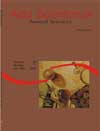<b>The effect of abiotic factors on the larviculture of pintado amarelo <em>Pimelodus maculatus</em> (Lacépède 1803): salinity an tank color</b> - DOI: 10.4025/actascianimsci.v26i2.1859
Abstract
Abiotic factors determine the success of the larviculture in some fish species. Tank color and the water salinity can cause alterations in the behavior and physiology of the fish post-larvae. The purpose of this experiment was to evaluate the influence of the difference water salinity concentration (0.0‰; 0.7‰; 1.4‰; 2.0‰; 2.5‰ and 5.0‰) and the use of white or black tanks in the larviculture of Pimelodus maculatus. The survival rate was affected by water salinity (p<0.05), with the highest rate 45.6±3.9%, obtained at a salinity of 2.0‰ and a total mortality at salinity 5.0‰. There was no difference in the survival rate (p>0.05) between post-larvae stocked in black or white tanks with an average value of 31.7±17.7%. Therefore, 2.0‰ proved to be the best salinity for larviculture of the Pimelodus maculatus, and the colors tested did not affect the survival of the post-larvae.Downloads
Download data is not yet available.
Published
2008-04-09
How to Cite
Weingartner, M., & Zaniboni Filho, E. (2008). <b>The effect of abiotic factors on the larviculture of pintado amarelo <em>Pimelodus maculatus</em> (Lacépède 1803): salinity an tank color</b> - DOI: 10.4025/actascianimsci.v26i2.1859. Acta Scientiarum. Animal Sciences, 26(2), 151-157. https://doi.org/10.4025/actascianimsci.v26i2.1859
Issue
Section
Animal Science
DECLARATION OF ORIGINALITY AND COPYRIGHTS
- I Declare that current article is original and has not been submitted for publication, in part or in whole, to any other national or international journal.
The copyrights belong exclusively to the authors. Published content is licensed under Creative Commons Attribution 4.0 (CC BY 4.0) guidelines, which allows sharing (copy and distribution of the material in any medium or format) and adaptation (remix, transform, and build upon the material) for any purpose, even commercially, under the terms of attribution.
Read this link for further information on how to use CC BY 4.0 properly.
0.9
2019CiteScore
29th percentile
Powered by 








































